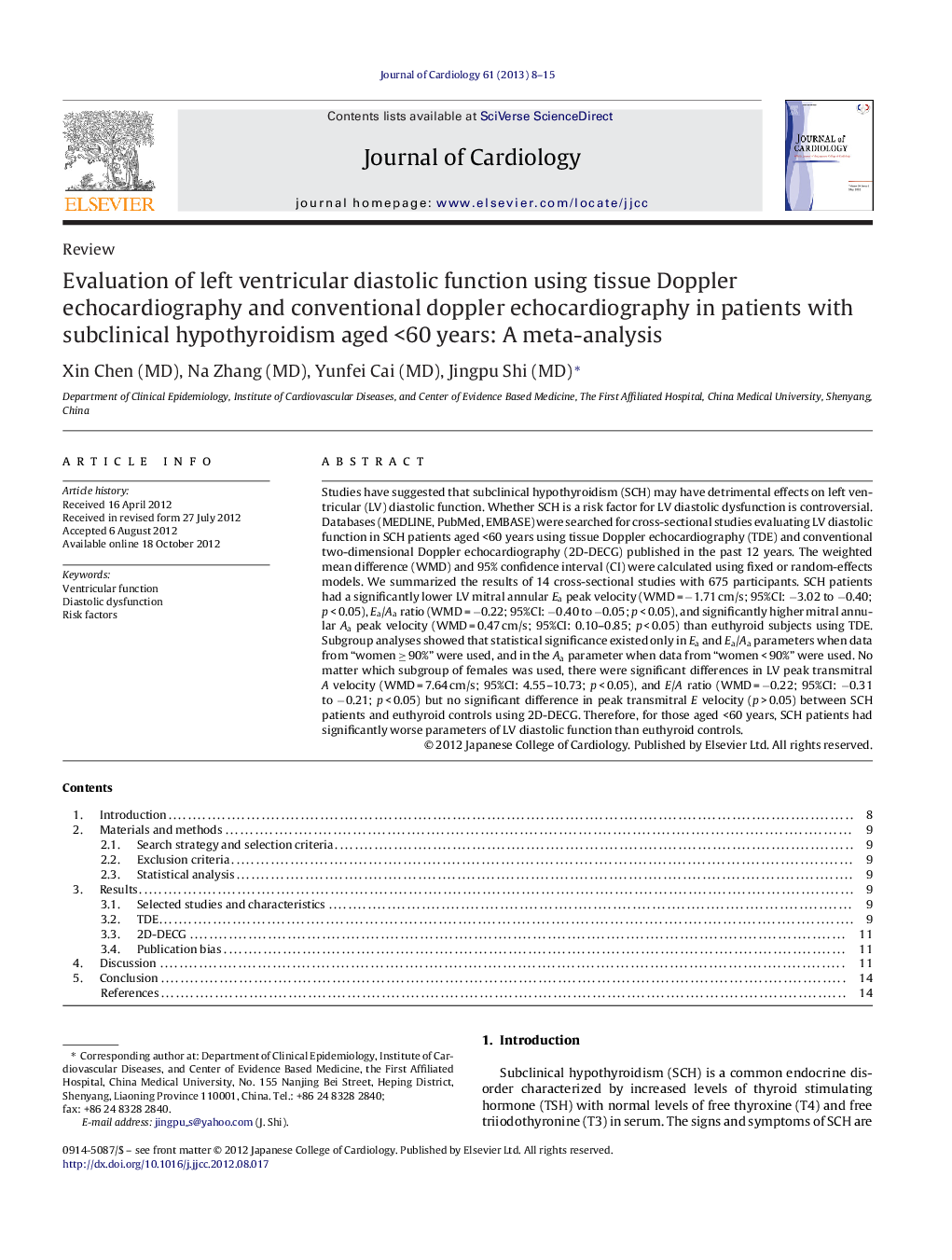| Article ID | Journal | Published Year | Pages | File Type |
|---|---|---|---|---|
| 2963212 | Journal of Cardiology | 2013 | 8 Pages |
Studies have suggested that subclinical hypothyroidism (SCH) may have detrimental effects on left ventricular (LV) diastolic function. Whether SCH is a risk factor for LV diastolic dysfunction is controversial. Databases (MEDLINE, PubMed, EMBASE) were searched for cross-sectional studies evaluating LV diastolic function in SCH patients aged <60 years using tissue Doppler echocardiography (TDE) and conventional two-dimensional Doppler echocardiography (2D-DECG) published in the past 12 years. The weighted mean difference (WMD) and 95% confidence interval (CI) were calculated using fixed or random-effects models. We summarized the results of 14 cross-sectional studies with 675 participants. SCH patients had a significantly lower LV mitral annular Ea peak velocity (WMD = −1.71 cm/s; 95%CI: −3.02 to −0.40; p < 0.05), Ea/Aa ratio (WMD = −0.22; 95%CI: −0.40 to −0.05; p < 0.05), and significantly higher mitral annular Aa peak velocity (WMD = 0.47 cm/s; 95%CI: 0.10–0.85; p < 0.05) than euthyroid subjects using TDE. Subgroup analyses showed that statistical significance existed only in Ea and Ea/Aa parameters when data from “women ≥ 90%” were used, and in the Aa parameter when data from “women < 90%” were used. No matter which subgroup of females was used, there were significant differences in LV peak transmitral A velocity (WMD = 7.64 cm/s; 95%CI: 4.55–10.73; p < 0.05), and E/A ratio (WMD = −0.22; 95%CI: −0.31 to −0.21; p < 0.05) but no significant difference in peak transmitral E velocity (p > 0.05) between SCH patients and euthyroid controls using 2D-DECG. Therefore, for those aged <60 years, SCH patients had significantly worse parameters of LV diastolic function than euthyroid controls.
